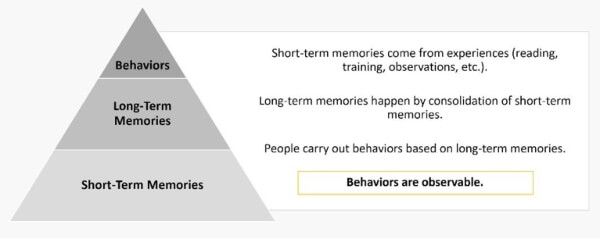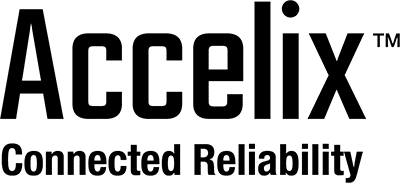Implementing organizational change requires accountability plus a long-term focus on behaviors

Why is it difficult to enact the changes that leaders want? It’s not a rhetorical question. For leaders and project managers everywhere, implementing the change they’ve ordered is frequently the most challenging part of the job.
In his October 2020 webinar with Fluke Reliability, titled, “Actually implementing a change,” leadership expert Tom Moriarty identified two reasons why change is hard to make stick in maintenance and reliability organizations:
- Many organizations don’t have a sound basis for assigning accountability.
- Those who are accountable haven’t received enough leadership training.
As the president of Alidade MER, Inc., Moriarty is a long-time consultant in organizational reliability and productive leadership, and he came to the above conclusion after seeing a consistent pattern on job sites.
“What I kept finding was that we’d work with plant personnel to introduce something new, like a CMMS or reliability-centered maintenance, and there were always problems with how to sustain it after implementation,” he says. After researching the issue, he realized that the problems he was seeing weren’t about the plant floor but were fundamentally about people.
Addressing barriers to change on the human side of the plant requires learning three things:
- Understanding what culture is
- Understanding how culture can be changed
- Applying the lesson and changing plant culture now
Culture, Moriarty says, is about what most people do, most of the time. And what people “do” are behaviors. When someone performs the same action often enough, it becomes a habit. And, when most people develop the same practices, it establishes the culture.
“When we are trying to implement a change, what we care about are the behaviors,” he continues.
How behaviors shift
Figure 1 challenges us to think about the building blocks of behaviors. The pattern starts with short-term behaviors, converts short-term learnings to long-term, and then long-term memories to behaviors, at which point, change has been accomplished.

Short-term learnings are what most new processes or policies provide: e.g., write a new standard procedure, communicate it, and train on it. Even better, personally demonstrate the latest technique or methodology. But to make it stick, you must create opportunities to convert those short-term learnings to long-term, or they’ll disappear. Moriarty advises observing the team’s behaviors, reinforcing the actions that lead to the right habits, and correcting the behaviors that don’t.
Tactics to help shift behavior include:
- Spaced repetition
- Engaging multiple senses (pattern hooks)
- Leveraging similar experiences (also a pattern hook)
- Undergoing emotionally charged events (not recommended)
“Be consistent and attentive,” he says. “Be respectful, motivating, and assertive.”
But most importantly, Moriarty suggests focusing on the level you have the most influence on—your direct reports.
“Make sure you have enough time to observe all of your direct reports. Let people know you’ve noticed their behaviors and give specific, not general, feedback. Offer both positive and corrective feedback; you can’t just do the latter.”
Accountability and responsibility
As you begin observing and then reinforcing or correcting behaviors, don’t forget to apply the same rules across the organization. To accomplish change plant-wide, all leaders need to use the same principles with their direct reports. This raises the importance of accountability.
By accountability, Moriarty means “the ultimate responsibility to justify their own actions or decisions, as well as those of their direct reports.” He describes responsibility more narrowly—to have control or authority over something or someone and to own the duty of taking care of it or them. Accountability cannot be delegated; responsibility can.
In short, direct reports have a vital role in implementing and managing change.
In the webinar, Moriarty steps through a visual guide to organizational reliability that has helped many teams understand how accountability is assigned. Start by identifying requirements, and authorize, execute, and delineate across roles. Senior personnel are accountable for providing direction, guidance, and assets; junior employees are accountable for carrying out and communicating deficiencies.
Every organization has different strengths and weaknesses. Building the cultural muscle to implement change requires multiple capabilities:
- Creating clear guidance about desired behaviors
- Making sure requested changes are supported by available assets
- Allocating sufficient time for leaders to observe behaviors and give feedback
- Conquering apprehension about giving positive or corrective feedback
- Focusing on direct reports and enabling them to focus on their direct reports
Start with the end in mind, Moriarty counsels. Think about the behaviors you want to see, communicate what you want those to look like, delegate responsibility to your direct reports, and expect cascading accountability/responsibility at each leadership level.
He also suggests training in any of the standard change models, whether it be John Kotter’s 8-step process, Prosci’s ADKAR model, Lewin’s 3-stage model, or GE’s change acceleration process.
For more information on changing behaviors, listen to Moriarty’s webinar in full. You can also visit his website and check out his book, “The Productive Leadership System.”
Related articles:
- Actually Implementing a change – webinar with Tom Moriarty
- “The productive leadership system” by Tom Moriarty, a guide to maximizing organizational reliability






